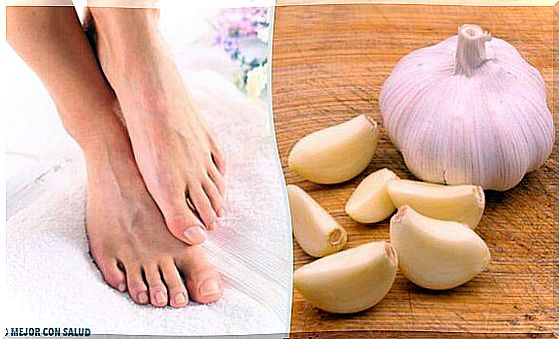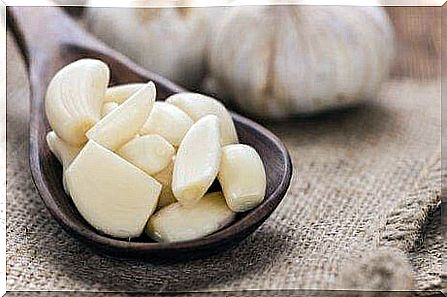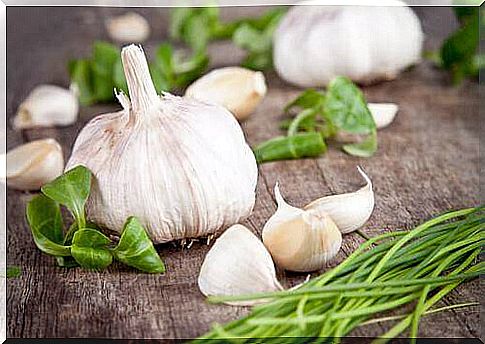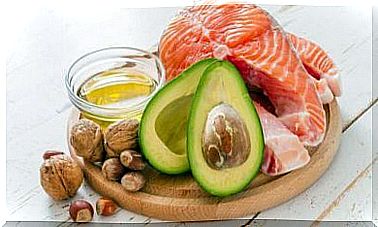How To Use Crushed Garlic Against Ingrown Toenails

Garlic is a plant that belongs to the onion family, so it is closely related to onions, shallots and leeks. But did you know that you can use garlic against ingrown toenails, due to its disinfectant properties?
Garlic is grown in many parts of the world and is a popular ingredient in the kitchen due to its strong smell and delicious taste. Throughout history, this food has been used because of its medicinal properties.
Causes and symptoms of an ingrown toenail

Ingrown toenails can cause a lot of discomfort. They occur when the area under one or both sides of a nail becomes sensitive and inflamed due to excessive growth of the nail or the skin pressing against it.
This discomfort is often caused by wearing shoes that are too short or narrow. High heels can also cause them, as they shift the body weight forward and cause the toes to be squeezed in the narrowest part of the shoe.
In other cases, ingrown toenails occur when you do not cut your toenails properly. You should cut them square and not rounded at the corners. If you do not, the skin can grow around the rounded corners, and when the nail grows as normal, it can penetrate.
Tips for cutting ingrown toenails

Cutting your nails properly is the first step in preventing ingrown toenails.
Below we tell you how to do it. Do not try to cut the ingrown part yourself, as this may make the problem worse.
- Leave the toenail in warm water to make it softer.
- Then cut the nails evenly along the tips with a clean and sharp nail clipper.
- Do not file around the corners or cut too much.
- In addition, you should consider wearing wide shoes until the problem is solved.
We also talk about the properties of garlic that can help relieve ingrown toenails, and we also share treatments so you can find out how to take advantage of them.
The properties of garlic

Garlic is a remarkable natural remedy for ingrown toenails.
As we mentioned earlier, garlic has historically been used for its medicinal properties. It contains a compound called allicin which gives it the benefits. This is one of the sulfur compounds that is released when the garlic is cut, crushed or chewed. It is responsible for the characteristic odor of garlic.
Since garlic is an antiseptic and natural healing plant, it can be used to treat ingrown nails and relieve the discomfort they cause.
1. Treatment with Vicks VapoRub and garlic against ingrown toenails
Vicks VapoRub is a menthol-based ointment that soothes irritation and pain in the affected nails. You can combine it with garlic to enhance the effects.
Although it can be difficult to get hold of here in Norway, it can be worth picking it up when you are abroad.
Ingredients
- 1 tbsp Vicks VapoRub (20 g)
- 1 clove of garlic
- And bandage
This is what you do
- Crush the garlic together with the ointment until you get a thick mass.
- Apply it on your ingrown toenail and cover it with a bandage.
- Let it work overnight and repeat for five consecutive days.
2. Garlic against ingrown toenails: A natural home treatment

Garlic is popular because of its antiseptic and anti-inflammatory effects, which you can benefit from with this preparation.
Ingredients
- 4 cups water (1 liter)
- 1 clove of garlic
- Cotton
This is what you do
- Boil the water and pour it into a container.
- Soak the toenail in the hot water several times. Be careful not to get burned!
- Wipe it with a clean cloth.
- Then crush the garlic. Dip some cotton into the mashed garlic and place it under the nail to take care of the infection.
- You should repeat this treatment two to three times a day.
Finally…
It is very important to consult a doctor in case of diabetes, young children, nerve damage (usually in the legs or feet), poor circulation or an infection around the nail. Do not try to treat this problem at home.
Your doctor will probably examine your nail. In addition, they may ask about your symptoms to treat the condition properly.









